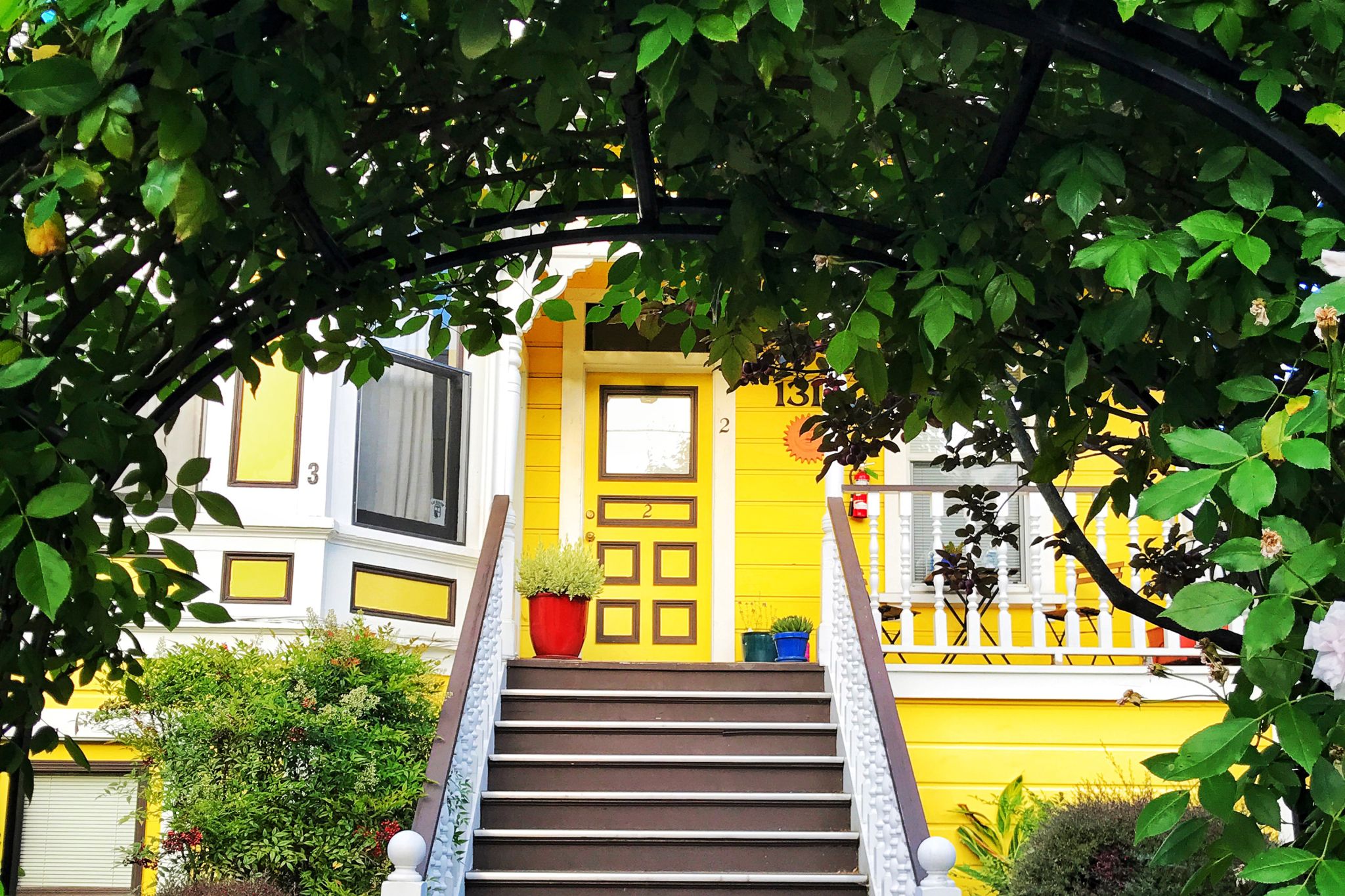Not only does replacing your front door kick up your curb appeal, it's a solid investment with a
With so many front door options out there, how do you know which is the best one for your home?
Front Door Options: The 3 Main Types
There are three main exterior door options: steel, fiberglass, and wood.
Steel Front Door
If you’re looking to save money, a steel door is a great choice, especially if you have the skills to hang it yourself.
A simple, unadorned steel door can sell for as little as $150 (not including hardware, lock set, paint, or labor) and typically runs as much as $400 at big-box retailers.
Steel offers the strongest barrier against intruders, although its advantage over fiberglass and wood in this area is slight.
Still, the attractive cost of a steel door comes with an important compromise: It probably won't last as long.
A steel door exposed to salt air or heavy rains may last only five to seven years. Despite steel’s reputation for toughness, it actually didn’t perform well in "Consumer Report's" testing against wood and fiberglass for normal wear and tear.
With heavy use, it may dent, and the damage can be difficult and expensive to repair. If your door will be heavily exposed to traffic or the elements, you may be better off choosing a different material.
Fiberglass Front Door
Fiberglass doors come in an immense variety of styles, many of which accurately mimic the look of real wood. And if limited upkeep is your ideal, fiberglass may be your best bet.
Fiberglass doesn’t expand or contract appreciably as the weather changes. Therefore, in a reasonably protected location, a fiberglass entry door can go for years without needing a paint or stain touch-up and can last 15 to 20 years. Although it feels light to the touch, fiberglass has a very stout coating that’s difficult for an intruder to breach; and its foam core offers considerable insulation.
Fiberglass generally falls between steel and wood in price; models sold at big-box stores start around $200.
Wood Exterior Front Door
Wood is considered the go-to choice for high-end projects; its luxe look and substantial weight can’t be flawlessly duplicated by fiberglass or steel -- though high-end fiberglass products are getting close. If your home calls for a stunning entry statement with a handcrafted touch, wood may be the best material for you.
Wood is usually the most expensive choice of the three -- usually starting at about $1,000, excluding custom jobs -- and requires the most maintenance, although it’s easier to repair scratches on a wood door than dents in steel or fiberglass.
Wood doors should be repainted or refinished every year or two to prevent splitting and warping.
If you’re concerned about the environmental impact of your door as well as its energy efficiency, you can purchase a solid wood door certified by the Forest Stewardship Council (FSC), which assures you that the wood was sustainably grown and harvested.
Tracing the environmental impact of a particular door -- from manufacturing process to shipping distance to how much recycled/recyclable content it contains -- is quite complicated and probably beyond the ken of the average homeowner, notes LEED-certified green designer Victoria Schomer. But FSC-certified wood and an Energy Star rating are an excellent start.
A final note on choosing a door based on energy efficiency: Because efficiency depends on a number of factors besides the material a door is made of -- including its framework and whether it has windows -- look for the Energy Star label to help you compare doors.
